THE FIFTH ELEMENT (1997)
In the future, a cab driver unwittingly becomes the central figure in the search for a legendary cosmic weapon to keep Evil at bay.
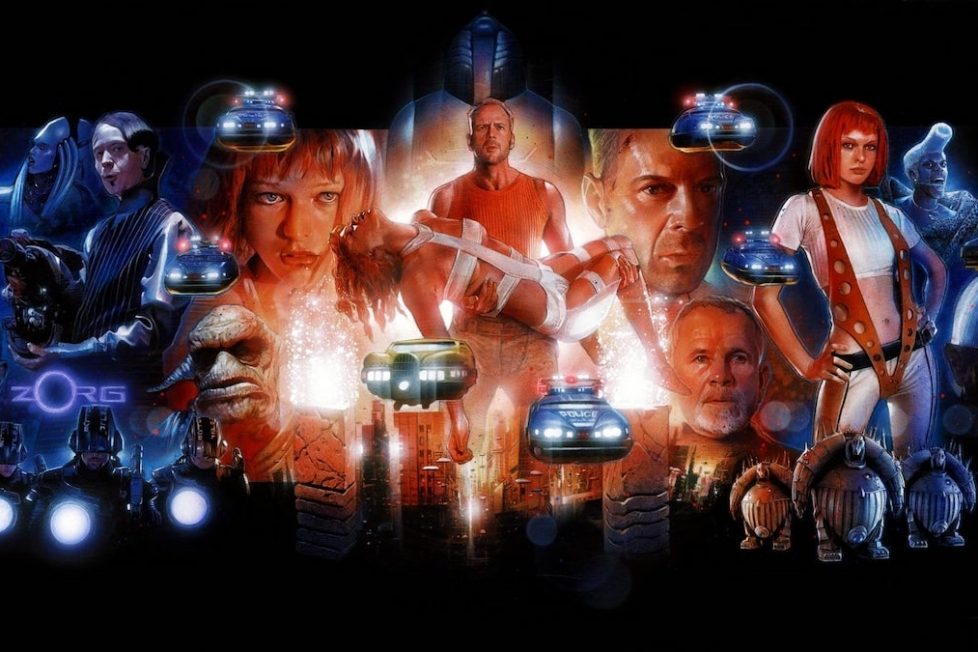
In the future, a cab driver unwittingly becomes the central figure in the search for a legendary cosmic weapon to keep Evil at bay.


For a few years in the late-1990s, The Fifth Element was the apex of cinematic world-building. Luc Besson’s vision of the 23rd-century cost $90M to produce, making it the most expensive European film ever made at the time. It remains a delightfully bizarre and vividly designed sci-fi romp, undoubtedly because Hollywood so rarely hires European filmmakers to create something that goes against the grain.
Besson hired artists like Jean ‘Mobius’ Giraud and Jean-Claude Mézières to work on the production design, while eccentric fashion designer Jean-Paul Gaultier created all the weird costumes. The Fifth Element may not be to everyone’s taste, but it’s refreshing to see such French flavourings transform an otherwise generic tale of good versus evil.
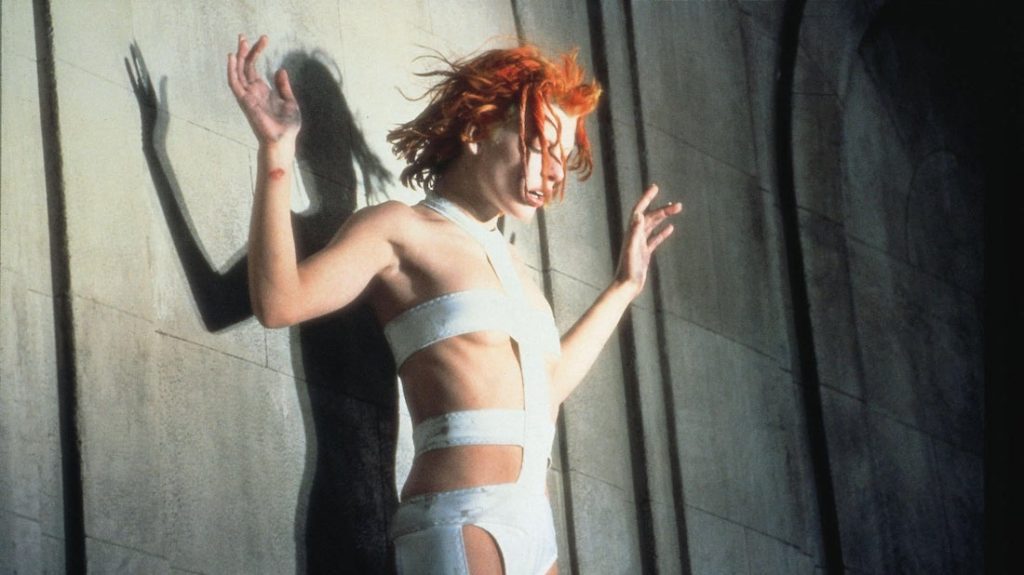
The Fifth Element was dreamed up by Besson when he was 16 and he proceeded to tinker with the idea deep into adulthood. Once he became an established filmmaker, with movies like The Big Blue (1988) and La Femme Nikita (1990) to his credit, his breakthrough Hollywood hit Leon (1994) paved the way for him to bring his creative writing to life at the age of 38. Besson had already tried to get The Fifth Element off the ground in the early-’90s following his earlier hits in France, but his attempt only extended the development phase as 8,000 pieces of artwork were made based on Besson’s enormous 400-page screenplay.
Columbia Picture eventually agreed to finance Besson’s expensive pet project once Leon became a worldwide hit for them, and Bruce Willis signed on to star after being courted along with Mel Gibson (who flatly turned it down). Gary Oldman was then hired to play the villain after impressing Besson with his work on Leon, and Milla Jovovich beat hundreds of applicants to the role of childlike alien Leeloo—which brought her to Hollywood’s attention and kickstarted her successful US career.

The Fifth Element doesn’t have a particularly groundbreaking storyline. A prologue set on Earth, 1914, lays out the idea that a Great Evil appears every 5,000 years, and can only be defeated by combining stones representing the four elements (earth, wind, fire, water) to create a fifth element—a divine being capable of defeating the encroaching Evil. A benign alien species called Mondoshawans take this weapon for safekeeping when it’s discovered by archaeologists in Egypt (so why was it left there?), but promise to return it when it’s needed.
300 years later, the prophecied Great Evil arrives in the form of a giant black cloud in outer space, which only a priest called Cornelius (Ian Holm) understands the truth about thanks to his teachings. The returning Mondoshawans are then ambushed by enemy Mangalores working for evil Earth industrialist Zorg (Gary Oldman), but the artefact they’re returning is retrieved from a wrecked Mondoshawan ship. And it turns out to be a beautiful orange-haired woman that scientists grow in a lab, known as Leeloo (Jovovich)—the personification of the fifth element. Then, after she escapes into the back of flying taxicab driven by former special forces soldier Korben Dallas (Willis), he must help Leeloo with the help of Cornelius to defeat the Great Evil before Zorg and the Mangalores stop them.
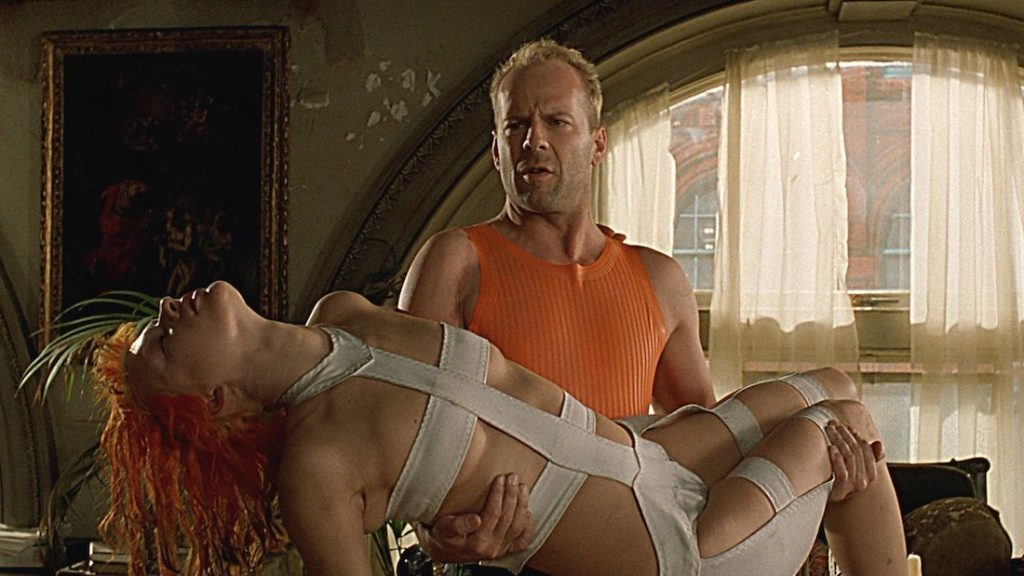
It helps not to think too much about the storyline, as The Fifth Element is more concerned with its idiosyncratic visuals. Besson loved comic-books as a child (his 2017 film Valerian and the City of a Thousand Planets was based on a strip called Valérian and Laureline, which Fifth Element also borrows from stylistically), so there’s no wonder this movie is indebted to that style of narrative. It’s really an excuse to indulge Besson’s love of colourful characters, crazy costuming, and enormous VFX spectacle.
While it was made during a time when CGI was becoming cheaper and more elaborate, there’s still a healthy use of practical effects and old-fashioned make-up. Indeed, The Fifth Element was arguably the best and most convincing vision of the future since Blade Runner (1982), and certainly amongst the best until Star Wars Episode I: The Phantom Menace (1999) premiered. But while dozens of films continue to evoke Star Wars and Blade Runner, The Fifth Element still seems unique because nobody else has thought to imagine a futuristic New York that’s embraced a more European aesthetic. I sometimes have to remind myself this is a 23rd-century Big Apple, as it actually feels more like a future Paris. Famous landmarks are rarely seen, which would be unthinkable if this had been directed by an American. The Statue of Liberty only appears in an establishing shot you might blink and miss.
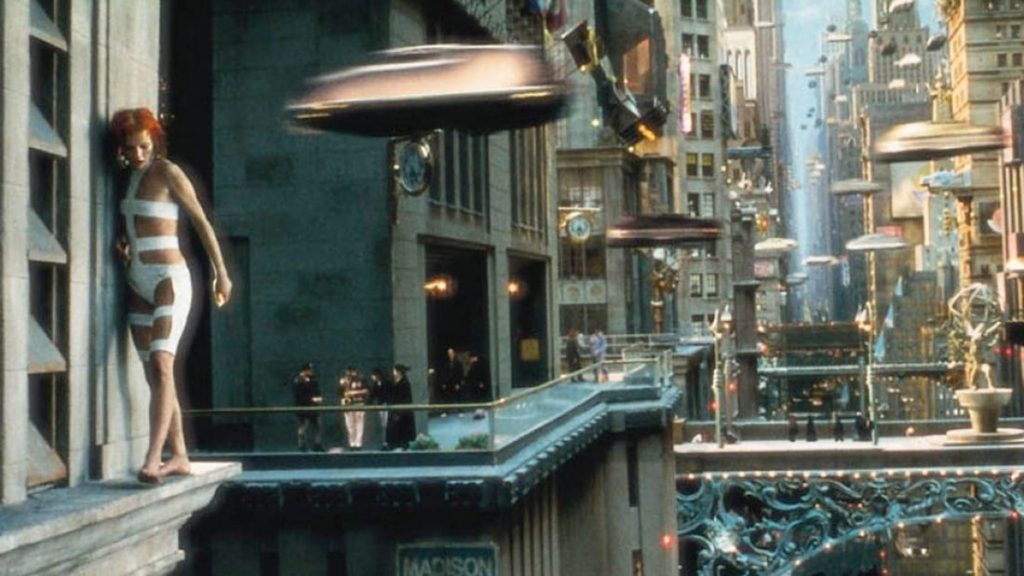
The performances of the cast are another solid reason to watch The Fifth Element, even if Bruce Willis is contentedly doing a version of his John McClane character. The final third of the movie even resembles a Die Hard (1988) film, only set on spacefaring cruise ship orbiting a planet. But while the role isn’t a stretch for him, late-’90s Willis still seemed to care about entertaining audiences wholeheartedly, and his handsome smirking goes well with a blonde hairdo and orange vest.
Gary Oldman makes for a memorable villain as Zorg, but only because of his bizarre look (half-bald with hair sprouting from a gap in a plastic head cap) and with Deep South drawl. Always something of a chameleon on-screen, there are still people who don’t realise this is the Gary Oldman! It’s just a shame his care in presenting a memorable villain isn’t matched by the screenplay, which gives his villain fuzzy logic. And there’s a strange decision to have him never share the screen with the hero. Indeed, there’s a shot where Willis exits the second Oldman appears on the same set.
The standout of the film is undoubtedly a then-23-year-old Milla Jovovich as Leeloo, for a variety of reasons. She’s obviously an attractive woman who gets to wear two iconic costumes (naked with a criss-cross of white bandages, then a white crop-top with orange braces), but she also exudes a childish naivety and is immediately likeable. She even learned a fake alien language Besson created himself, which she used to correspond with the director via e-mail to prove her commitment to this role. Besson clearly took a liking to Jovovich during production, as he left his then-wife Maïwenn Le Besco (who appears as alien singer Diva Plavalaguna) for his leading lady that same year. They made one other film together, The Messenger: The Story of Joan of Arc (1999), which flopped at the box office, before divorcing in 1999 shortly before Jovovich’s US career took off with Resident Evil (2002). The actress then married that film’s director, Paul W.S Anderson, too, but their relationship went the distance.
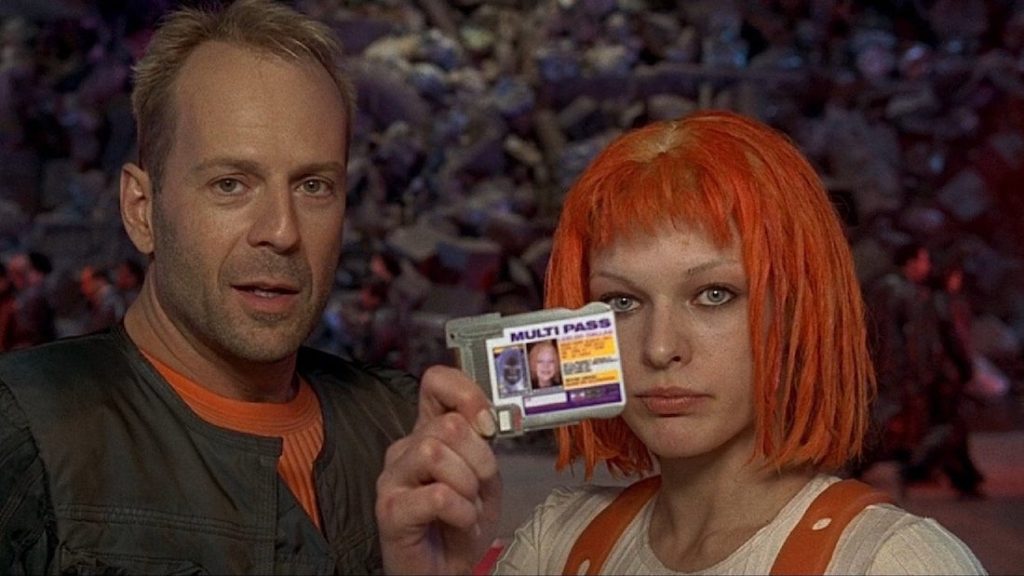
While the technical aspects of The Fifth Element hold up incredibly well decades later, it’s unfortunate the story isn’t stronger and the set-pieces more involving. It certainly captures an exciting mood early on when everything is being established, and Besson ensures this world and its inhabitants are visually interesting and a little bizarre (like a doorstep robber who starts absentmindedly dancing when Dallas snatches his weapon away), but once you’ve acclimated and started to crave a story with twists and turns… nothing really arrives. Zorg is ultimately a wasted opportunity who doesn’t feel threatening, and the entire third act changes gears to involve flamboyant talk show host Ruby Rhod (Chris Tucker) aboard a flying hotel. Tucker’s loud and screeching performance is exactly what Besson intended, but that doesn’t make it any more palatable. In 1997, his introduction as a latecomer sidekick irked me, and the years haven’t been much kinder. The Fifth Element as a whole sort of goes off the rails about two-thirds of the way through.
However, purely as a viewing experience designed to beguile and entertain with broad characterisations and lavish production design work, The Fifth Element is a notable part of 1990s sci-fi. There’s really no other film quite like it and it managed to gross $263M at the box office in ’97, although Besson’s own adaptation of Valerian clearly walked in its footsteps.
FRANCE • UK • USA | 126 MINUTES | 2.39:1 | COLOUR | ENGLISH • SWEDISH • GERMAN • ARABIC • EGYPTIAN (ANCIENT)

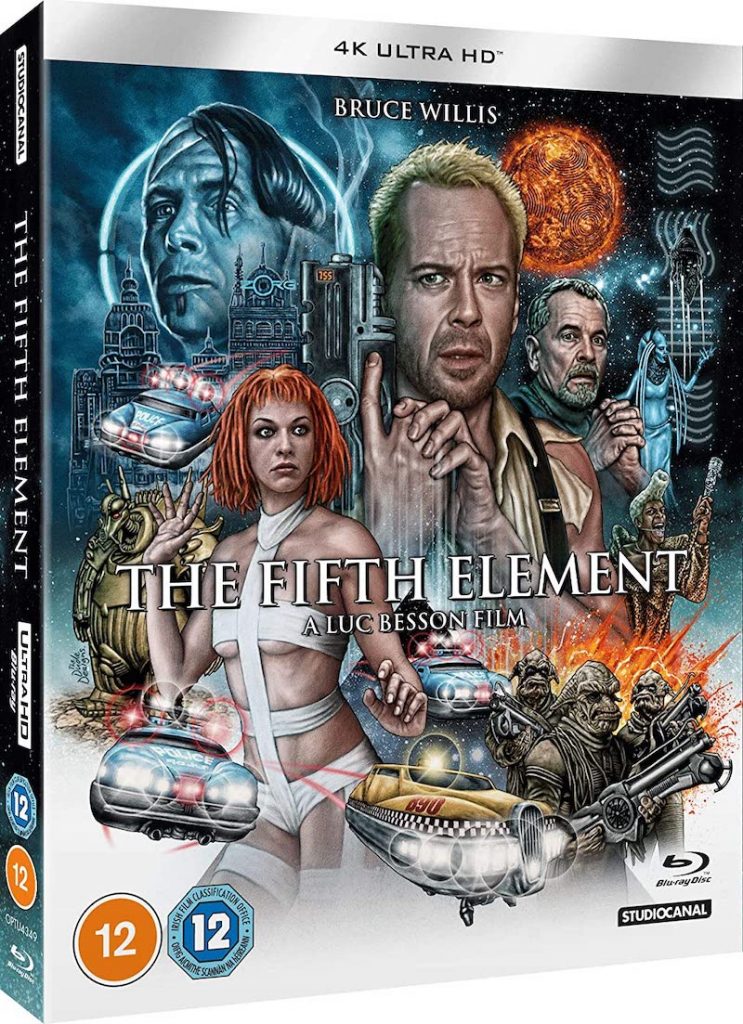
Gorgeous. That’s the only way to describe this amazing 4K Ultra HD transfer of The Fifth Element, which pops off the screen in every scene thanks to the High Dynamic Range (HDR). This is a film that has given every home video format a workout over the years, and this 4K disc does a remarkable job with the colours of the costumes, skin tones, and space blacks. It’s noticeably better than the 1080p Blu-ray. Detailing is sharp and film grain’s noticeable but well resolved, making one appreciate a movie shot on 35mm with that indefinable quality anything shot digitally can lack.
Dolby Atmos is a welcome feature for audiophiles, but not a first for The Fifth Element because the previous Blu-ray also had a Dolby TrueHD 7.1 track that handled Atmos. The mix does an incredible job heightened the soundstage and gives the whole film an added boost, particularly whenever a big explosion needs some rumbling bass. There are many sequences that make good use of the rear channels, like the flying car chase through the bustling city’s airways.

director: Luc Besson.
writers: Luc Besson & Robert Mark Kamen (story by Luc Besson).
starring: Bruce Willis, Gary Oldman, Ian Holm, Chris Tucker & Milla Jovovich.
